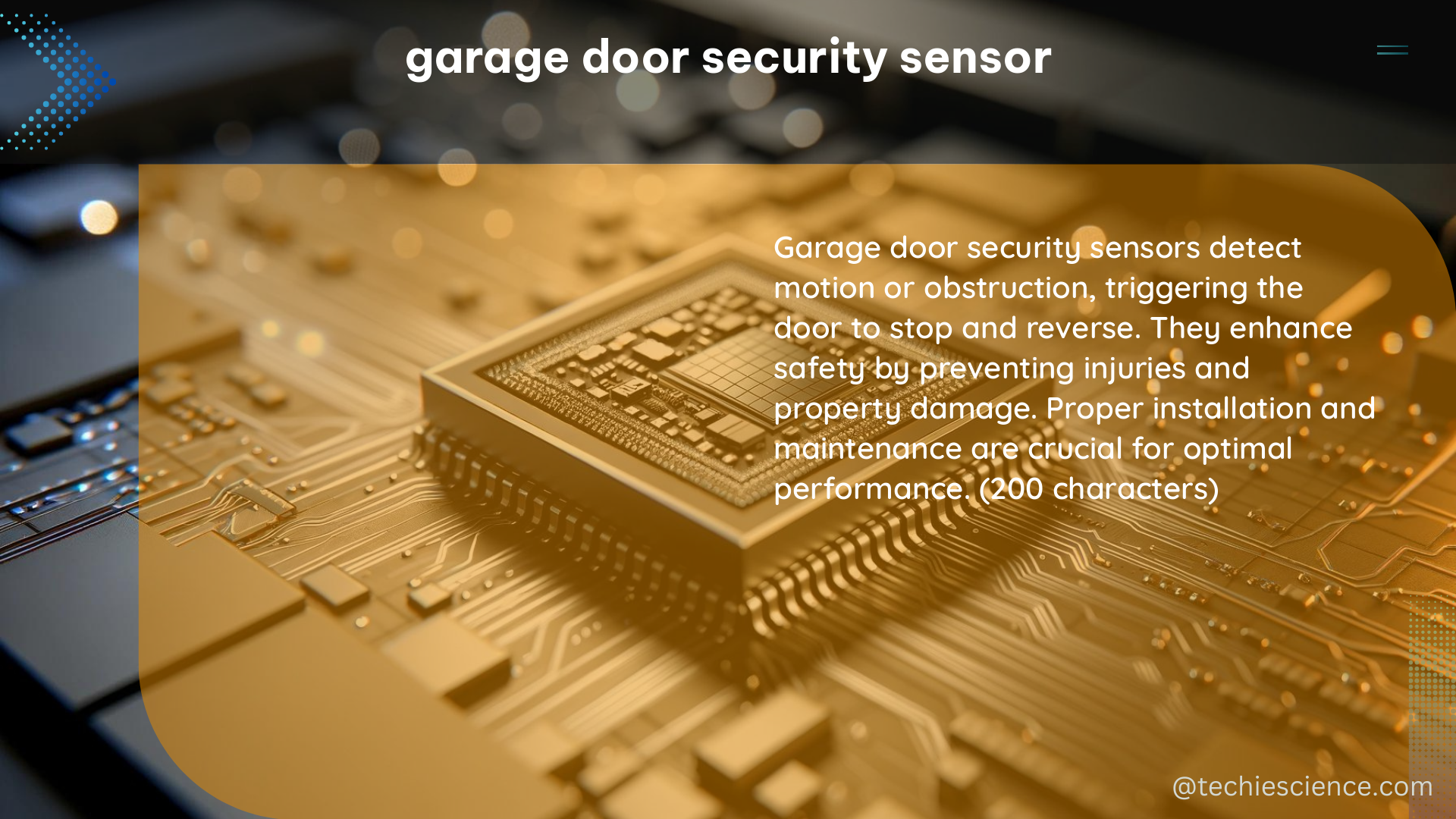Garage door security sensors are an essential component of modern garage door openers, ensuring the door stops and reverses if an obstruction is detected. These sensors emit an infrared beam across the garage door opening, and if the beam is broken, the door will not close. Understanding the technical specifications and common issues with these sensors is crucial for maintaining a secure and reliable garage door system.
Measuring the Effectiveness of Garage Door Security Sensors
When it comes to evaluating the performance of garage door security sensors, there are several key metrics to consider:
Detection Range
The detection range of a garage door security sensor refers to the distance over which the sensor can reliably detect an obstruction. This is typically measured in inches or centimeters, with a common range being 6 to 12 inches (15 to 30 cm). Sensors with a longer detection range can provide more comprehensive coverage, but may be more susceptible to interference or false triggers.
Field of View
The field of view of a garage door security sensor is the width of the area that the sensor can cover. This is usually measured in degrees, with a typical range of 30 to 45 degrees. Sensors with a wider field of view can detect obstructions across a larger portion of the garage door opening, but may have a shorter detection range.
Operating Voltage
The operating voltage of a garage door security sensor is the voltage required for the sensor to function correctly. Most sensors operate on 12-24V DC, which is the standard voltage range for most garage door openers. Ensuring the sensor is connected to the correct voltage is crucial for proper operation.
Current Consumption
The current consumption of a garage door security sensor refers to the amount of electrical current the sensor draws during operation. This is typically measured in milliamps (mA) or amps (A), with a common range being 15-25 mA. Sensors with lower current consumption can help reduce the overall power draw of the garage door system.
Response Time
The response time of a garage door security sensor is the time it takes for the sensor to detect an obstruction and send a signal to the garage door opener. This is usually measured in milliseconds (ms), with a typical range of 5-10 ms. Faster response times can help ensure the door stops or reverses quickly in the event of an obstruction.
Operating Temperature Range
The operating temperature range of a garage door security sensor is the temperature range in which the sensor can function effectively. This is typically given in degrees Celsius or Fahrenheit, with a common range being -20 to 50 degrees Celsius (-4 to 122 degrees Fahrenheit). Sensors with a wider operating temperature range can be used in a variety of climate conditions.
Specific Sensor Specifications: Chamberlain Security+ 2.0 Safety Sensors

To provide a concrete example, let’s examine the technical specifications of the Chamberlain Security+ 2.0 Safety Sensors, a popular choice among homeowners:
| Specification | Value |
|---|---|
| Detection Range | 6 inches (15 cm) |
| Field of View | 45 degrees |
| Operating Voltage | 12-24V DC |
| Current Consumption | 15mA (typical), 25mA (max) |
| Response Time | Less than 10ms |
| Operating Temperature Range | -4 to 122 degrees Fahrenheit (-20 to 50 degrees Celsius) |
These specifications demonstrate the level of detail and performance characteristics that should be considered when selecting a garage door security sensor.
DIY Garage Door Security Sensor with Arduino
For those interested in a more customized solution, it is possible to create a DIY garage door security sensor using an Arduino or similar microcontroller board. One such project is the “pico-w-garage-door-sensor” on GitHub, which utilizes a Raspberry Pi Pico W to detect the state of a garage door (open or closed) and send that information to Home Assistant for display.
This project showcases the flexibility and potential of a DIY approach, allowing homeowners to tailor the sensor to their specific needs and integrate it with their smart home setup. By understanding the technical specifications and common issues with garage door security sensors, DIY enthusiasts can design and build a solution that meets their unique requirements.
Conclusion
Garage door security sensors are a critical component of modern garage door systems, ensuring the safety and security of your home. By understanding the key performance metrics, such as detection range, field of view, operating voltage, current consumption, response time, and operating temperature range, homeowners can make informed decisions when selecting and maintaining their garage door security sensors.
Whether you choose a pre-built solution like the Chamberlain Security+ 2.0 Safety Sensors or opt for a DIY approach using an Arduino or similar microcontroller, having a solid grasp of the technical details will help you ensure your garage door system operates reliably and effectively.
References:
– Misaligned Sensors but the Sensors Look Fine
– pico-w-garage-door-sensor Project on GitHub
– Garage Door Sensor Troubleshooting

The lambdageeks.com Core SME Team is a group of experienced subject matter experts from diverse scientific and technical fields including Physics, Chemistry, Technology,Electronics & Electrical Engineering, Automotive, Mechanical Engineering. Our team collaborates to create high-quality, well-researched articles on a wide range of science and technology topics for the lambdageeks.com website.
All Our Senior SME are having more than 7 Years of experience in the respective fields . They are either Working Industry Professionals or assocaited With different Universities. Refer Our Authors Page to get to know About our Core SMEs.